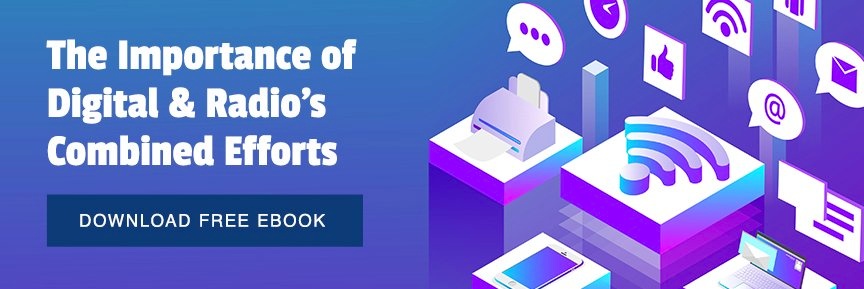Companies are continually looking for ways to connect with the right audience, generate leads, convert prospects, and drive sales. Over the past 25 years, digital advertising has become key to achieving all of these goals.
Digital advertising is an advertising strategy that leverages the Internet to reach a broad consumer base as well as niche demographics. Digital advertising can include a wide range of methods such as pay-per-click (PPC) campaigns, display ads, and OTT (Over-the-top) ads.
Digital Advertising vs. Digital Marketing
Marketers often use the terms "digital advertising" and "digital marketing" interchangeably. While there is a big overlap between the two terms, there are also significant differences.
Namely, digital marketing refers to an overall process or strategy, while digital advertising refers to the specific tactics used within that process. Another way to look at it is that digital marketing is more of a service that is provided and digital advertising has more immediate ROI results. For example, digital marketing often includes:
- Blogging
- Video Creation
- Social Management Services
- Search engine optimization (SEO)
In contrast, digital advertising tactics include:
- Display ads
- Facebook ads
- Video ads
- PPC campaigns
- OTT ads
A commonality between digital advertising tactics is that they are “pay-to-play.” In this way, digital ads are similar to traditional ads.
Digital Advertising vs. Traditional Advertising
When we think of traditional advertising, several techniques may come to mind: mail flyers, television commercials, radio spots, etc. Digital advertising, on the other hand, almost exclusively involves online strategies: search engine marketing (SEM), retargeting ads, optimizing paid campaigns and so forth.
While digital and traditional advertising are very different, they are often most effective when used in tandem. For example, a TV commercial may encourage viewers to check out a company's website.
Digital Strategies
The beauty of digital advertising lies in its versatility. Depending on your business’s specific needs and objectives, you can use digital advertising to grow brand awareness, generate leads, convert prospects, or all of the above!
For instance, suppose that you implement a branding campaign focused on consumers aged 25-40. In addition you want to target the consumer based on how they are searching and researching. You publish branding ads thru programmatic display ads as well as on all the major social media platforms to position your company to be top of mind for prospects. At the same time, you beef up your Search Engine Marketing plan by investing in highly targeted PPC campaigns.
What's the end result?
Consumers who have your business top of mind will search for you on Google or another search engine, and they'll easily find you. You'll generate more leads and ultimately convert more prospects.
Why Use Digital Advertising?
There are many good reasons to integrate digital advertising into your overall marketing plan. A compelling body of research suggests that digital advertising is a powerhouse for lead generation. For instance:
- When you utilize Geo-Fencing in a branding campaign you can measure the amount of consumers that you served a mobile ad too and then they walked back into your conversion zone.
- Email campaigns achieve an average open rate of 17% and a click-through rate of 4%.
- Business organizations using best practices are generating an average of 470,000+ website visitors and 1,800 leads per month.
- 64% of consumers say that watching a marketing video on Facebook has influenced a purchase decision within the last month.
Digital advertising is a vital piece of the demand generation and customer acquisition puzzle in today's marketing landscape. For the best results, you should integrate digital advertising with traditional channels like radio. If you do, your business will undoubtedly enjoy significant growth in the months and years to come.


